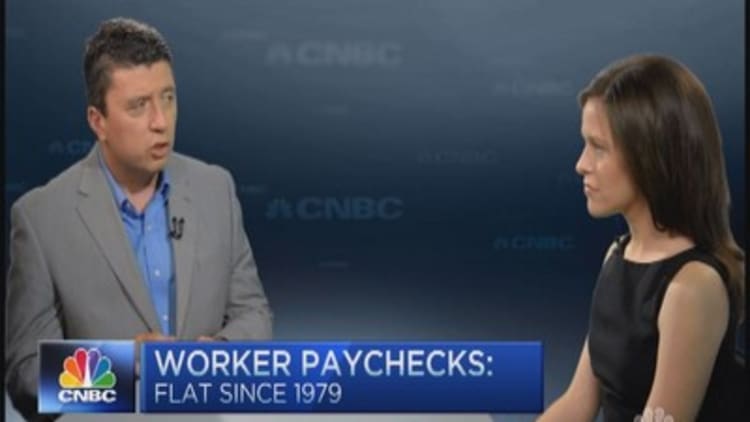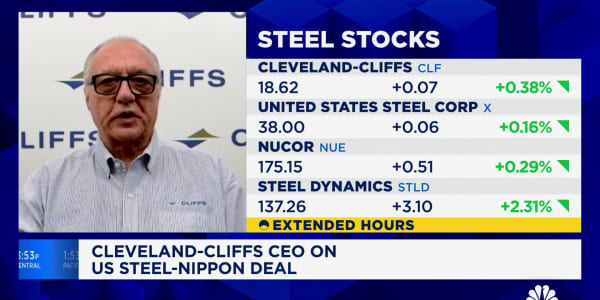
Unemployment is below 6 percent for the first time since 2008, but it's not quite time to uncork the champagne when it comes to the jobs picture.
Wage growth in the U.S. has been flat for decades, providing an ugly counterweight to an ostensibly improving part of the economy.
September's positive jobs report, which saw the unemployment rate fall to 5.9 percent, was celebrated on Wall Street, but a growing chorus of experts suggests that the jobless number alone may not be enough to measure the health of the labor markets. New research suggests there should be more attention paid to income trends.
If your most recent raise felt underwhelming, there is compelling data confirming that your wallet is being squeezed by inflation and stagnant wages. Growth in wages peaked in 1973 and has steadily declined since. In fact, today's wages have the same purchasing power as they did in 1979, according to a report by the Pew Research Center.
As for that headline unemployment number the market celebrated, the so-called U-6 rate—or the full unemployment figure that includes discouraged and underemployed workers—provides a more complete picture, particularly as the numbers relate to wage growth.
Read MoreMaybe it's time to throw out the unemployment rate
Research from David G. Blanchflower and Adam S. Posen posited that not only do discouraged workers make the headline unemployment number misleading, but they also put downward pressure on wages.
"A substantial portion of those American workers who became inactive should not be treated as gone forever but should be expected to spring back into the labor market if demand rises to create jobs," Blanchflower and Posen wrote.
The trouble with measuring discouraged workers is that they are considered fully out of the market, though many in that category are likely to take anything at any salary level.
Unfortunately, stagnant wages may persist as workers in weak labor markets have little leverage for demanding raises when there are others waiting in the wings. Even though the discouraged workers are not counted in the headline unemployment number, it is becoming increasingly difficult to deny their contribution to slack in the economy.
Read MoreConfidence in Obama on economy sinks to new low
That grim sentiment about wage growth was echoed by the person whose opinion may matter most to the markets—Federal Reserve Chair Janet Yellen—in remarks Friday at the Conference on Economic Opportunity and Inequality at the Boston Fed branch.
"One reason to be concerned about the apparent decline in new business formation is that it may serve to depress the pace of productivity, real wage growth and employment," she said. "Another reason is that a slowdown in business formation may threaten what I believe likely has been a significant source of economic opportunity for many families below the very top in income and wealth."
The single best gauge of the economic recovery—better than the headline unemployment rate—may be wage growth. The most important number in the latest jobs report showed just a 2 percent annualized increase.
Read MoreUS job openings at highest level since 2001
Demand for higher wages has been heard in all sectors, from September's McDonald's protests to last week's plea from a Wells Fargo employee that he and all 200,000 of his colleagues receive a $10,000 pay bump.
Now the most common of workplace grievances is being met with powerful support.
"The low rate of wage growth is, to me, another sign that the Fed's job is not yet done," Yellen said back in May during testimony to Congress.





